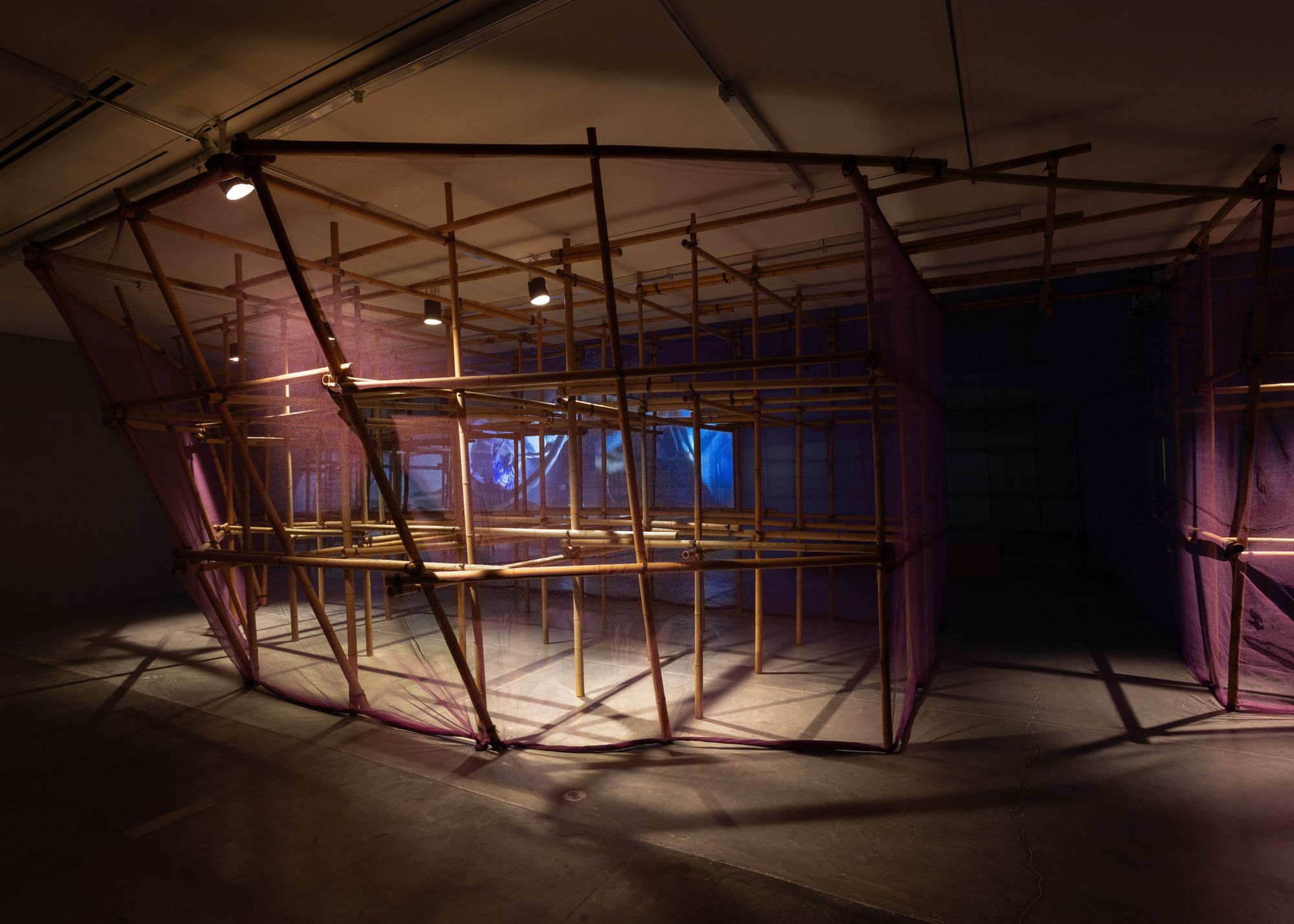
Lap-See Lam, excerpt from Floating Sea Palace, 2024. Video, sound, 26:00. Courtesy the artist; Galerie Nordenhake, Berlin/Stockholm/Mexico City; Moderna Museet, Stockholm; The Vega Foundation; Studio Voltaire, London; The Power Plant Contemporary Art Gallery, Toronto.
Lap-See Lam creates mythical video installations that draw on traditional storytelling forms such as Cantonese opera and shadow play puppetry. Her work takes a magic realist approach, creating alternative representations of Chinoiserie as defined by imperialist history, while simultaneously reflecting on her own family history of migration from Hong Kong to Sweden, both to claim and complicate this cultural heritage.
Floating Sea Palace (2024) draws on the folklore tale of Lo Ting, a mythical half-human, half-fish being who is believed to be the ancestor of the Hong Kong people. In Lam’s story, Lo Ting unknowingly summons a dragon ship, based on a real three-story ship called Floating Restaurant Sea Palace that was relocated in the 1990s from Shanghai to Europe, where it has lived many lives as restaurants, a haunted house, and now, a ruin. Filmed partly aboard this ship, Floating Sea Palace combines 3D scans of the vessel with shadow animations, as well as original composition and sound design by Marlena Salonen and Linus Hillborg, creating a phantom-like aesthetic that invites imaginative encounters with the story and its characters. Floating Sea Palace reflects on transformation, translation, and the longing to return to an ever-shifting home that remains out of reach.






